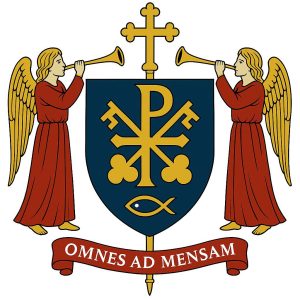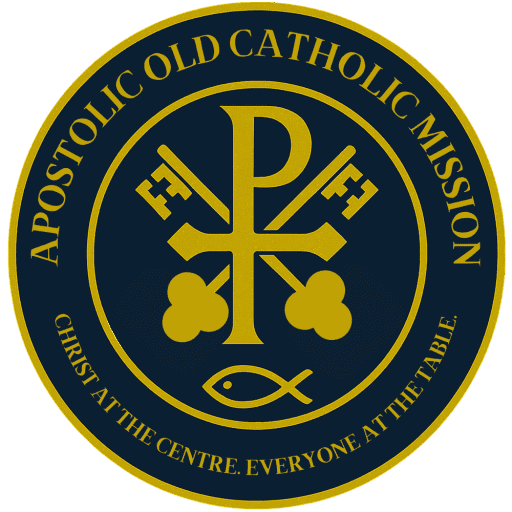What Is the Old Catholic Church?
Catholic in faith, not Roman in control.
This page explains where the Independent Sacramental Movement (ISM) and Old Catholic movement comes from.
Catholic and catholic – what we mean
The word catholic did not begin as a brand name for a modern institution.
Small “c” catholic means “universal” or “according to the whole”. In the early centuries, Christians used it to describe the one Church spread through many cities and nations, sharing one apostolic faith, celebrating the same sacraments, and recognising one another’s ministries. When they spoke of the “catholic Church”, they meant the Church in its fullness, present in many local churches.
Capital “C” Catholic in modern speech usually refers to the Roman Catholic Church centred on the Bishop of Rome (the Pope), together with the Eastern Catholic Churches in communion with him. That is a later, narrower usage.
On this page, when we speak about the first centuries we will normally say catholic in this older sense of the one universal Church. When we mean the present-day Roman Catholic Church, we will say Roman Catholic or Catholic.
Rooted in the ancient Church — renewed in conscience
Where the Old Catholic Church Comes From
The Old Catholic Church began when faithful catholics chose to stay true to the early Church — even when Rome changed direction.
The Old Catholic Church is not a new invention or breakaway sect. It began with sincere catholics who loved the Church, believed in its ancient teachings, and honoured its sacraments — but could not accept new doctrines introduced by the Roman Catholic hierarchy in the 1800s.
To understand where the Old Catholic Church comes from, we need to go back to the beginning.
The early Church: united, sacramental, and shared in leadership
In the first centuries after Christ, the Church grew across the Roman Empire. Each city had its own bishop, who led the local Christian community in teaching, worship, and care. These bishops worked together in regional councils, guided by Scripture, prayer, and shared tradition. Even the Bishop of Rome — later called the Pope — was one among many bishops. He was respected, especially in the West, but he did not rule over the whole Church.
For roughly the first 1,000 years of Christianity, there was no single “head of the Church on earth.” The Church was one, holy, catholic (universal), and apostolic — built on Christ, guided by the apostles’ teaching, and passed down in community.
Growing centralisation and conflict
Over time, the Bishop of Rome began to claim more authority. Differences in culture, theology, and politics developed between Eastern and Western Christianity. In 1054, a formal split occurred between the Western Church (based in Rome) and the Eastern Orthodox Churches. Rome increasingly claimed that the Pope had supreme authority over all Christians everywhere.
Many catholics in the West accepted this over time, but not without difficulty. Some theologians and entire regions questioned these changes, holding instead to the older model of shared leadership among bishops.
The breaking point: Vatican I and papal infallibility
In 1870, the First Vatican Council met in Rome. This council declared that the Pope was infallible — that is, incapable of error when making official declarations about faith or morals. It also gave him universal jurisdiction, meaning authority over all churches and bishops worldwide.
These teachings were new. They had never been declared dogma in the Church before. Many faithful catholics could not accept them. They believed that:
- No single bishop, even the Pope, should have absolute power
- The ancient faith did not teach papal infallibility
- These new doctrines went beyond Scripture and the early Church
Some bishops, clergy, and laypeople walked away from Vatican I — not from catholicism, but from these innovations. They wanted to remain catholic in the original sense: creedal, sacramental, and apostolic.
The birth of the Old Catholic Church
Those who rejected the new papal doctrines became known as Old Catholics. The word “Old” doesn’t mean outdated. It means they held to the original, undivided Church — the Church before new dogmas were added.
They formed independent Catholic communities in places like Switzerland, Germany, and the Netherlands. These churches:
- Retained apostolic succession and valid sacraments
- Rejected papal infallibility and central control
- Emphasised freedom of conscience, local leadership, and shared responsibility
- Welcomed dialogue with Orthodox, Anglican, and Protestant Christians
In 1889, Old Catholic bishops issued the Declaration of Utrecht — a powerful and clear statement of faith that affirmed the ancient Church’s teachings and rejected unnecessary innovations. This document is still a foundation for many Old Catholic Churches today.
A Church of continuity — not conflict
Old Catholics didn’t walk away from the catholic faith. They walked towards it — towards its roots, its beauty, and its original calling. Their decision was not about rebellion or reform. It was about fidelity. They wanted to preserve what the Church had always believed, before later doctrines and divisions took hold.
Today, the Old Catholic Church continues that path: catholic in belief, sacramental in worship, and free in structure. Many communities, including those within the Independent Sacramental Movement (ISM), seek to carry forward the life of the early Church — with open hearts, clear teaching, and a deep respect for conscience.
A Church with open doors and grounded conscience
Old Catholic, the Union of Utrecht, and the Independent Sacramental Movement (ISM)
In a strict, historical sense, “Old Catholic” refers especially to the larger, continuous churches that emerged from the break over Vatican I and are now organised in bodies such as the Union of Utrecht (and, in a related way, the Union of Scranton and the Polish National Catholic Church). These churches are widely recognised as having maintained apostolic succession and a real sacramental life, and they often serve as a bridge between Roman Catholic, Anglican, and Lutheran traditions.
Over time, many smaller jurisdictions have arisen which draw their Orders, at least in part, from Old Catholic or Old Roman Catholic lineages. They often use names such as “Old Catholic”, “Old Roman Catholic”, “Independent Catholic”, or “Independent Orthodox”, but they are not part of the historic Old Catholic unions, nor of the Roman Catholic, Eastern Orthodox, or official Anglican structures.
Collectively, scholars often describe these smaller, self-governing bodies as part of the Independent Sacramental Movement (ISM) — a broad family of churches and jurisdictions which:
- give central place to the sacraments, especially the Eucharist and Holy Orders;
- generally claim apostolic succession through lines from Roman Catholic, Eastern Orthodox, Old Catholic, Anglican, or related episcopal churches;
- are not subject to direct jurisdiction from Rome, the Orthodox patriarchates, or Canterbury;
- often consist of small, locally rooted communities, with clergy who may serve bi-vocationally.
Within this Independent Sacramental Movement (ISM), there is enormous variety — from small, prayerful communities with stable worship and sound teaching, to fragile groups more interested in titles than in real pastoral care.
The Apostolic Old Catholic Mission stands within this Independent Sacramental Movement. We draw from Old Catholic roots, respect the historic Old Catholic unions, and seek to live a recognisably catholic, sacramental, and apostolic life in our own small context.
What Makes the ISM and Old Catholics Different
The Old Catholic Church shares much with Roman Catholicism — but it also makes several important distinctions. These differences aren’t about being rebellious or “modern.” They’re about remaining faithful to the early Church and placing Christ at the centre — not hierarchy.
Here’s what sets Old Catholicism (and many serious ISM communities) apart:
These differences are not just about what we don’t do — they reflect a deeper calling to live out the Gospel in simplicity, freedom, and love. We hold fast to the treasures of the catholic tradition, but without fear, legalism, or exclusion.
Faithful. Inclusive. Apostolic. Still Catholic.
A Catholic Way of Being Church
We are catholic — but we are not Roman Catholic.
We are sacramental — but not exclusive.
We are structured — but never rigid.
The Old Catholic Church and ISM offers an alternative Catholic witness: one that honours tradition without idolising it, one that opens the Table rather than fencing it, and one that places pastoral care above power or politics.
In a world where many feel disillusioned or excluded by church institutions, we offer something different:
- A space to rediscover ancient faith with modern clarity
- A welcome that includes rather than excludes
- A Church that believes the sacraments are for the healing of souls, not the reward of the righteous
We hold to the ancient faith of the apostles — and we do so freely, faithfully, and joyfully. Our way of being Church follows the model of the early Christian communities: rooted in Scripture, guided by the Holy Spirit, and shaped by shared leadership, hospitality, and sacrament.
At the heart of it all is our motto:
Christ at the Centre. Everyone at the Table.




